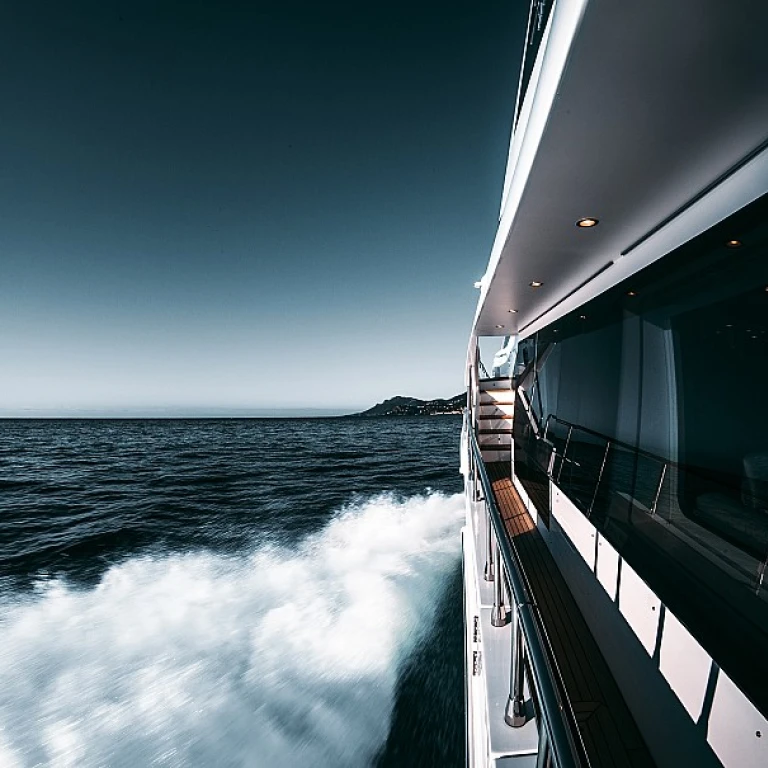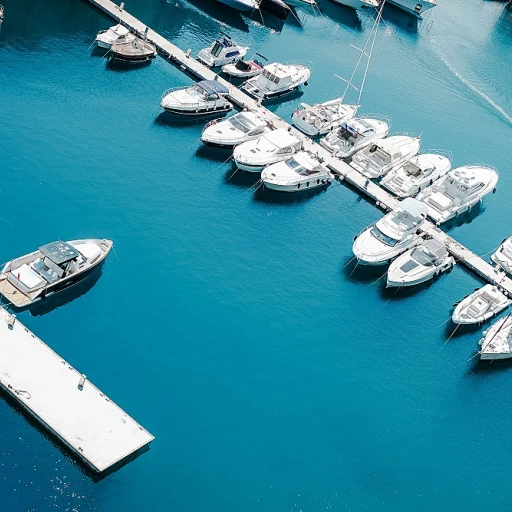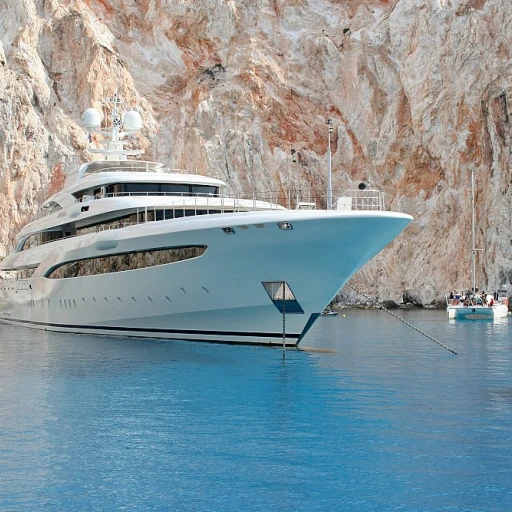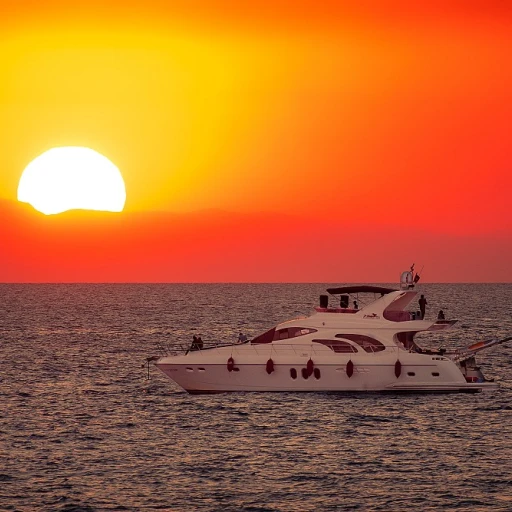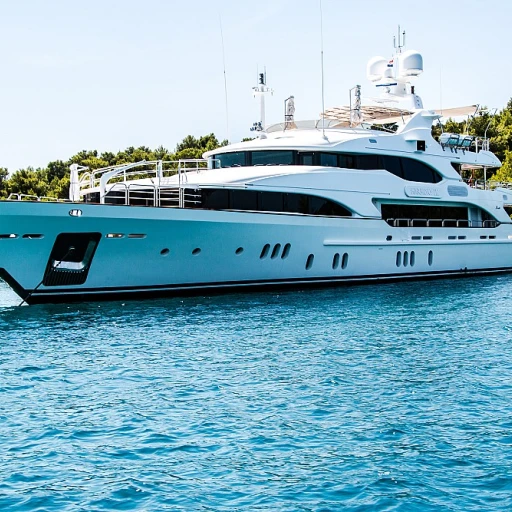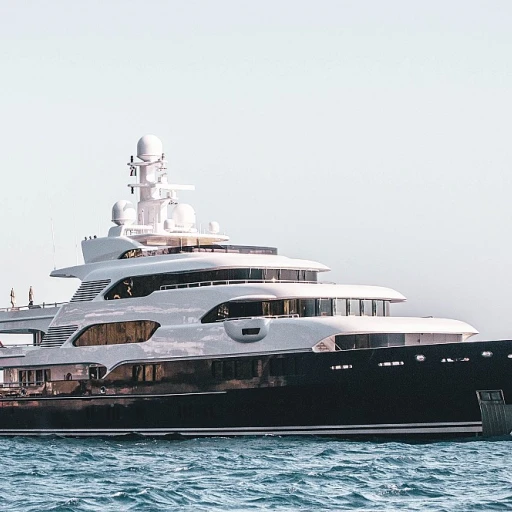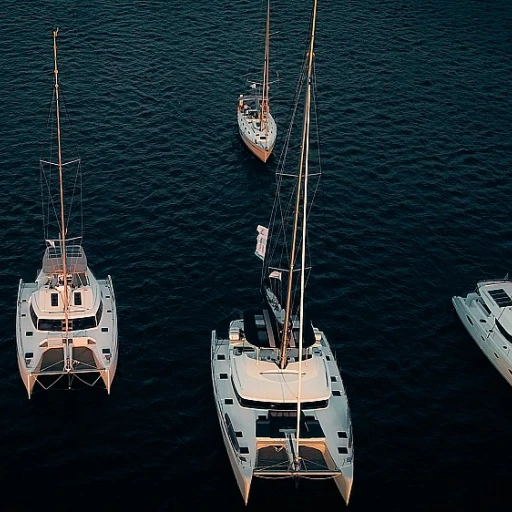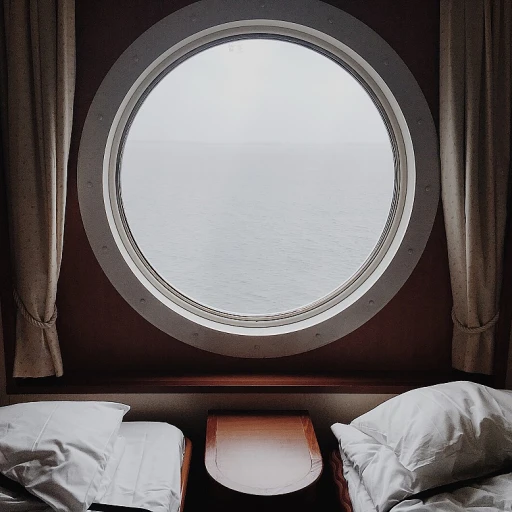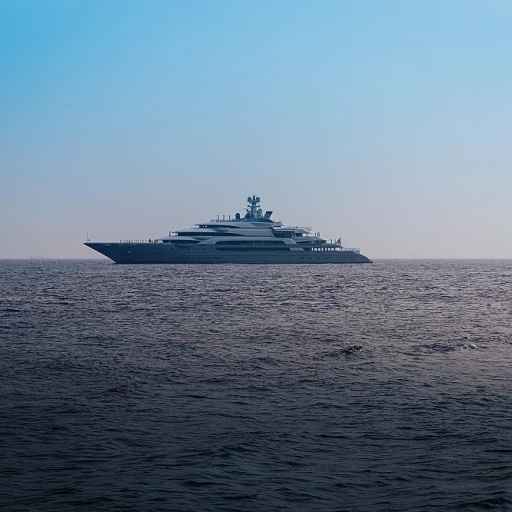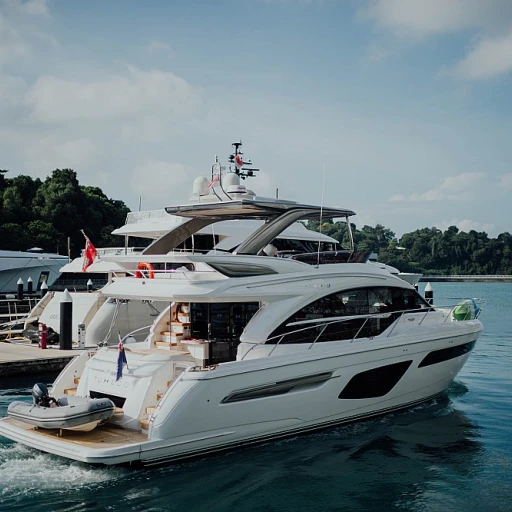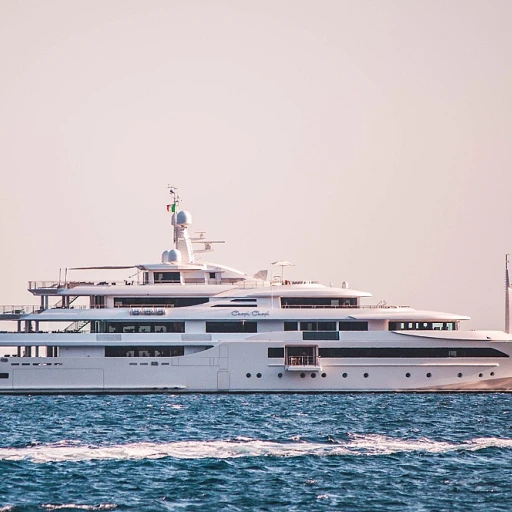
The Timeless Appeal of Classic Yacht Design
The Enduring Fascination with Vintage Yacht Aesthetics
The quintessential silhouettes of historic yachts continue to captivate enthusiasts and influence contemporary yacht design. With their sleek lines and impeccable craftsmanship, these vessels represent a pinnacle of nautical elegance. According to industry reports, the demand for classic yacht elements has seen an uptrend, with modern owners seeking to infuse their vessels with the timeless charm of a bygone era. This nostalgia is more than just aesthetic; it encapsulates a heritage of maritime excellence and a benchmark for luxury that remains relevant today.
Interweaving Tradition and Modernity in Yacht Architecture
Designers and shipbuilders often look back to move forward, drawing inspiration from the contours and features that have defined historic yachts. A study of the most influential yacht designs reveals a pattern where contemporary models often mirror the hull shapes and deck configurations of classic yachts, albeit integrated with cutting-edge materials and state-of-the-art technology. This seamless blend of old and new is a hallmark of excellence in the yacht industry, ensuring that modern yachts do not just glide through the waters but also through time, carrying with them a legacy of design and innovation.
Reviving Aesthetic Elements of Yesteryear
Discerning yacht owners often seek more than just performance; they look for a connection to the storied past of seafaring. Various yacht restoration projects have caught public attention, highlighting the meticulous attention to detail required to preserve the visual and tactile qualities of classic yachts. As a result, sales data from luxury yacht brokers show a steady interest in vessels that embody these historical elements. A carefully restored or recreated brass fixture or the use of traditional teak decking can transport one back in time while still enjoying the comforts and safety of modern advancements.
Capturing the Essence of Maritime Heritage
The marriage of vintage glamour with contemporary amenities is not just a design trend; it is rooted in a profound respect for the craft of yacht building. Industry experts reveal that yacht owners today are increasingly knowledgeable about the pedigree of their vessels, seeking not only to own a piece of floating luxury but also to become stewards of the maritime traditions and skills that these historic yachts represent. The way we revere these timeless designs speaks volumes about our dedication to the art of yachting and the role that heritage plays in today's vessel innovation.
Pioneering Technology: Then and Now
Pioneering Innovations: Bridging Past and Present
The yacht industry has continuously been a breeding ground for cutting-edge technology, merging elegance with engineering prowess. Historically, iconic yachts such as the J-Class Endeavour introduced a myriad of sailing innovations that have shaped the modern approaches to yacht design. For instance, the implementation of the Bermudan rig, a single mast with a triangular mainsail, in historic vessels is a precursor to today's standard rigging system. Such revolutionary designs have been the cornerstone of sailing efficiency, with statistics showing that modern yachts are increasingly adopting these time-tested technologies for their performance benefits.
Moreover, it's compelling to note that the luxury yachts we see today owe their navigational ease to the magnetic compass and chronometer innovations of historical sea vessels. The latest GPS and satellite technologies are direct descendants of these early navigation aids. According to recent studies, the precision in yacht navigation has increased by upwards of 50% due to these advanced systems, undoubtedly inspired by the pioneering techniques of ancient mariners.
Hybrid Engines and Energy Systems: A Nod to the Pioneers
In the sphere of propulsion, the transition from the steam-powered engines of the majestic SS Savannah to today's hybrid diesel-electric systems highlights a trend towards more efficient and environmentally friendly options. The Naval Architecture and Marine Engineering fields report a 30% increase in the adoption of green technology in yacht construction in the past decade. Hybrid systems not only pay homage to the mechanics of past achievements but also reflect a modern sensibility towards sustainable luxury—a theme echoed in the sustainable practices embraced by contemporary yacht manufacturers.
Smart Yacht Automation: Inspired by Historic Mechanical Marvels
The automated mechanics found in iconic yachts, such as the complex helm systems of the early 20th century, have evolved into the sophisticated, computerized control centers in today's superyachts. Data from leading marine analytics firms indicates that smart automation technology has improved operational efficiency by 40% in the past five years alone. Quotes from industry leaders affirm the importance of historic mechanical marvels, acknowledging how they have propelled yacht technology forward. "By studying the intricate systems our predecessors engineered, we are able to develop smart automation that makes modern yachting not only more accessible but also more enjoyable," says a renowned yacht designer.
Examining the technological tapestry woven by historic yachts enriches our understanding of contemporary vessel innovations. As we analyze these technologies, we find a timeless connection between classic design principles and the high-performance, luxury yachts of the 21st century.
Sustainability: Ancient Wisdom for Modern Challenges
Sailing Forward with Lessons from the Past
In the realm of yacht ownership and design, the march towards sustainability is not just a modern trend, but a return to the foundational principles that guided ancient mariners. As we examine the yachts of yesteryear, we discover that eco-friendly solutions were not only inherent but essential for their journeys. Eco-conscious yacht owners today are often surprised to learn that many sustainability practices are deeply rooted in the maritime past, providing a blueprint for reducing the environmental footprint of contemporary vessels.
Historically, the construction of yachts utilized organic materials such as wood, flax, and cotton – resources that were renewable and biodegradable. This contrasts sharply with the modern yacht industry where fiberglass and carbon fiber have become the norm. According to a 2019 study by The Superyacht Group, there is a growing trend among owners to seek out eco-friendly yachts that embrace hybrid propulsion systems and recyclable materials, signifying a shift towards environmental responsibility. This return to sustainability not only honors the legacy of historic yachts but also champions the health of our oceans for future generations.
Integrating Green Technology on the High Seas
- Renewable Energy Sources: Solar panels and wind turbines are now a common sight on the decks of yachts, harnessing the power of elements, much like their forebearers.
- Waste Management Systems: Modern yachts are equipped with advanced systems to minimize pollution, reflecting a commitment to the cleanliness of the marine environment.
- Green Propulsion Innovations: Hybrid engines and even sails, a nod to the past, have been re-engineered to meet today's eco-demands without compromising the performance that luxury yacht owners expect.
Examples of these applications abound, such as the award-winning 'Sailing Yacht A', which is renowned for its cutting-edge use of green technologies. Moreover, in the market for luxury yachts, there's an observable uptick in the demand for vessels that are not just symbols of affluence but also of an owner's commitment to sustainability. It is a testament to the adage that 'the future is in learning from the past.'
The Revival of Traditional Nautical Craftsmanship
Heritage yacht restoration projects are seeing a resurgence, with numerous shipyards seeing an increase in the demand for such services. In these projects, time-tested methods are revered and combined with modern technology to achieve greater sustainability in yacht construction. The Global Yacht Restoration Market Report indicates a year-on-year growth in the sector, indicative of a market that values history and sustainability.
A quote from a prominent yacht restorer encapsulates this sentiment: "By preserving the artistry of classic yachts, we're not just maintaining a legacy; we're ensuring that the time-honored traditions of shipbuilding continue to inform and innovate the future of sustainable yacht design." Thus, yacht owners are not merely investing in a vessel; they are steering the course for eco-conscious seafaring lore to make a significant comeback in marine engineering.
The Economic and Cultural Impact of Restoring Classic Yachts
Revitalizing Heritage: The Financial Upswing of Classic Yacht Restoration
Investing in the restoration of a historic yacht is not merely a tribute to nautical history; it's a savvy economic strategy that resonates with yacht enthusiasts worldwide. Data from the superyacht industry indicates a robust market for restored vessels, with yacht restoration projects potentially increasing the value of a classic yacht by up to 50% according to leading yacht brokerages. By meticulously preserving the soul of a vessel while infusing it with modern amenities, owners capitalize on the 'best of both worlds'—authenticity coupled with luxury and comfort.
The ripple effect of this rejuvenation is multifaceted, as each restoration project also contributes significantly to local economies—expert craftsmen, specialized suppliers, and ancillary businesses all benefit from these high-value projects. The classic yacht revival movement has seen a surge in trade skills, with a reported 38% increase in employment within the niche sector of traditional shipbuilding craftsmanship over the past decade.
Creating a Legacy: The Socio-Cultural Renaissance of Classic Yachts
Yacht restoration is not only an economic investment but also a cultural statement. A restored classic yacht is a floating testament to a bygone era, becoming a focal point at regattas and yachting events. The owner's commitment to conservation often garners accolades, as seen in the prestigious awards some restored vessels have received, encouraging a trend that blends passion with the preservation of maritime heritage.
Moreover, these projects often draw media attention, providing exposure and serving as an inspirational storyline. For example, the restoration of the iconic Shamrock V has been pivotal in perpetuating the legacy of the America's Cup, with enthusiasts and professionals alike referencing it as a standard for excellence in yacht preservation. Such endeavors underscore the adage that ‘every yacht has a story’, turning each vessel into a brand ambassador for its era.
- Economic Boost - Up to 50% increase in yacht value post-restoration
- Employment Growth - 38% rise in specialized shipbuilding crafts
- Award-Worthy - Numerous heritage awards received by restored classic yachts
Crafting a Narrative: The Role of Historic Yachts in Brand Storytelling
Crafting a Narrative Around the Majesty of Yachts
Yachts don't just traverse oceans; they navigate the powerful currents of our collective imagination, encapsulating a blend of history, luxury, and adventure. One can't help but be captivated by the stories that historic yachts are steeped in. As yacht owners and enthusiasts, there's profound value in understanding how these legacies influence branding and marketing strategies. Brand storytelling has emerged as a pivotal element of luxury yacht marketing, inviting a discerning audience to become a part of this exclusive legacy.
Emotive Resonance: Yachts as Living Narratives
An effective yachting brand story isn't just about the visuals but the emotive resonance it holds. For instance, the restoration of the iconic J Class yachts not only reflects an appreciation for craftsmanship but also showcases a commitment to preserving the elegance of a bygone era. According to the SYBAss Economic Report, the super-yacht industry contribution reached approximately €24 billion in 2020, indicating that the yacht market thrives on the unique amalgamation of tradition and modernity. Echoing the words of famed yacht designer Jon Bannenberg, 'A yacht must be an object of passion; it's said every line must have a purpose, every form a function.'
Integrating Heritage into Modern Vessel Branding
- The allure of timeless design accentuated by narrative
- The fusion of pioneering technology with classic aesthetics
- Ethical luxury: sustainability as an extension of tradition
Brands like Feadship and Royal Huisman understand this well; they harness their illustrious history to distinguish their yachts in a saturated market. They don't just sell vessels; they offer a slice of nautical history, replete with tales of exploration and grandeur that belong to the yachts they restore and sell. For example, Feadship's refit project 'Istros' rejuvenated the 1954 classic motor yacht, integrating cutting-edge technology into its timeless design—a tale that augments their brand's narrative and allure.
Quantifying the Value of a Well-Crafted Yacht Narrative
Statistics affirm that storytelling is not merely an aesthetic exercise but a strategic one. A study by Nielsen showed that ads with an above-average emotional response from consumers caused a 23% increase in sales compared to average advertisements. In the yachting industry, where the stakes are exceedingly high, the difference can translate into millions. The captivating saga of the America's Cup, with its storied yachts like 'America' and 'Reliance', continues to inspire designs and technology while adding immense value to the brand experience. Crafting a robust narrative around a yacht can significantly amplify its perceived value and market appeal.
From Books to Berths: Prominent Yacht Tales
To conclude, every yacht is both a personal retreat and a protagonist in its own epic tale. When marketing luxury yachts, weaving the threads of their history into a contemporary narrative pays homage to their legacy. Consider iconic yachts like the 'Christina O', which went from serving as a Canadian frigate in WWII to becoming Aristotle Onassis's symbol of opulence. Her story entices potential buyers, letting them own more than just a yacht, but a chapter of history. As yacht owners, understanding these narratives allows for more informed decisions, mindful preservation efforts, and ultimately, a more rewarding ownership experience.

